

Distant view of the crossing of St. Peter'sThis enormous bronze canopy, imitating the earlier smaller versions in cloth, occupies the center of the crossing under the dome as well as marking the spot of St. Peter's burial. It had to be large since the area it occupies is gigantic. Scholars are hard-pressed to define the medium. Is it architecture? Sculpture? Bernini was skilled in both (as well as painting and writing plays) and this structure combines both media.Similarly, it combines elements from the Old and New Testaments, as well as papal symbolism. Like the Cathedra Petri, it asserts the primacy and history of the Catholic faith as part of its Counter-Reformation agenda. The top features and orb and cross, a way of indicating that the universe is under the reign of Christ. The twisted columns are a reminder of the Temple of Solomon, asserting the connection with that Old Testament patriarch. |
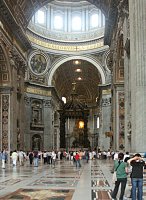
| |
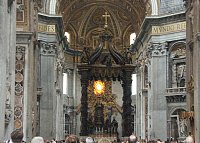
|

|
Four columns soar upwards, above each of which a beautiful angel is perched. The heavy bronze tasseled panels allude to the cloth original form. |
| Under the volutes holding the orb and cross, putti hold up the symbols of the papacy--the keys and papal tiara. On the columns, seen on the last row, the specific reigning pope, Urban VIII, is suggested, with the bees and suns, the heraldic emblems of his Barberini family. The vine on the twisted columns refers both to the Eucharist and the laurel, another Barberini emblem. | ||
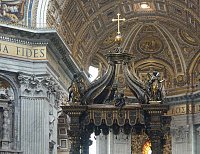
|
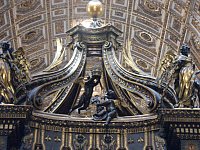
|
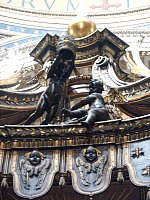
|

|
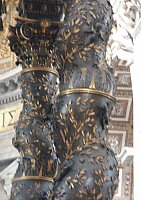
|

|
 Click here to return to index of art historical sites.
Click here to return to index of art historical sites.
 Click here to return to index of artists and architects.
Click here to return to index of artists and architects.
 Click here to return to chronological index.
Click here to return to chronological index.
 Click here to see the home page of Bluffton University.
Click here to see the home page of Bluffton University.

